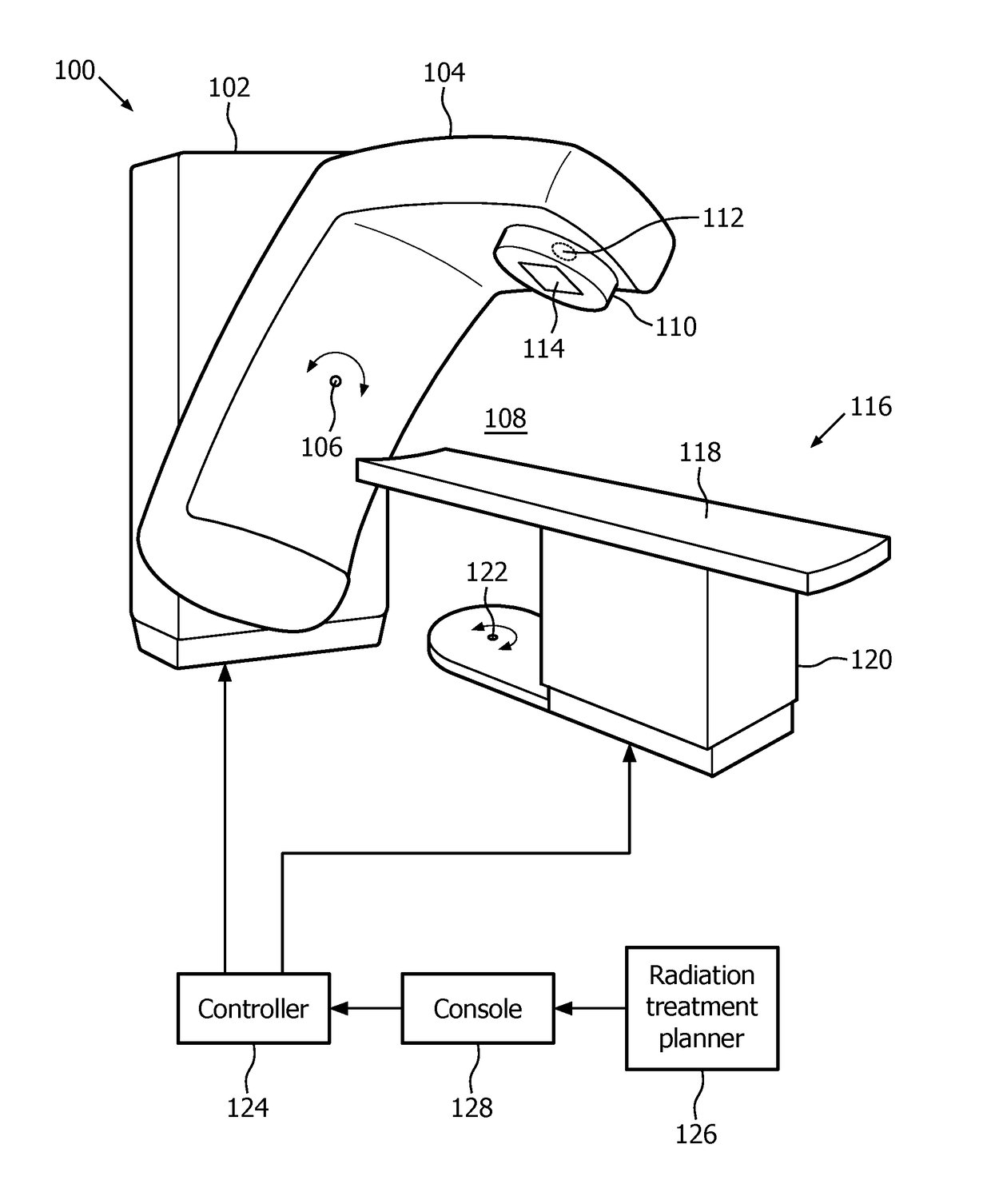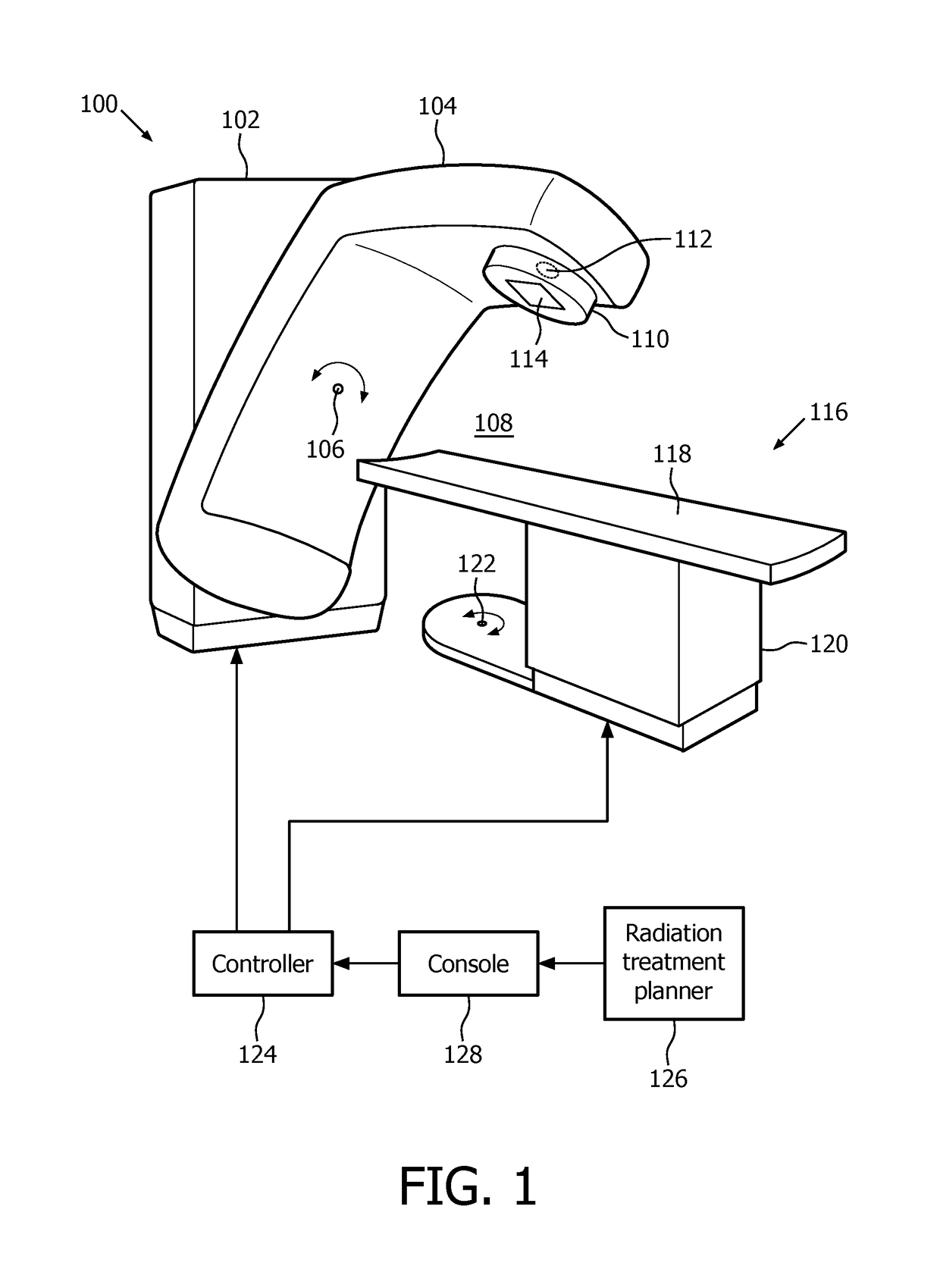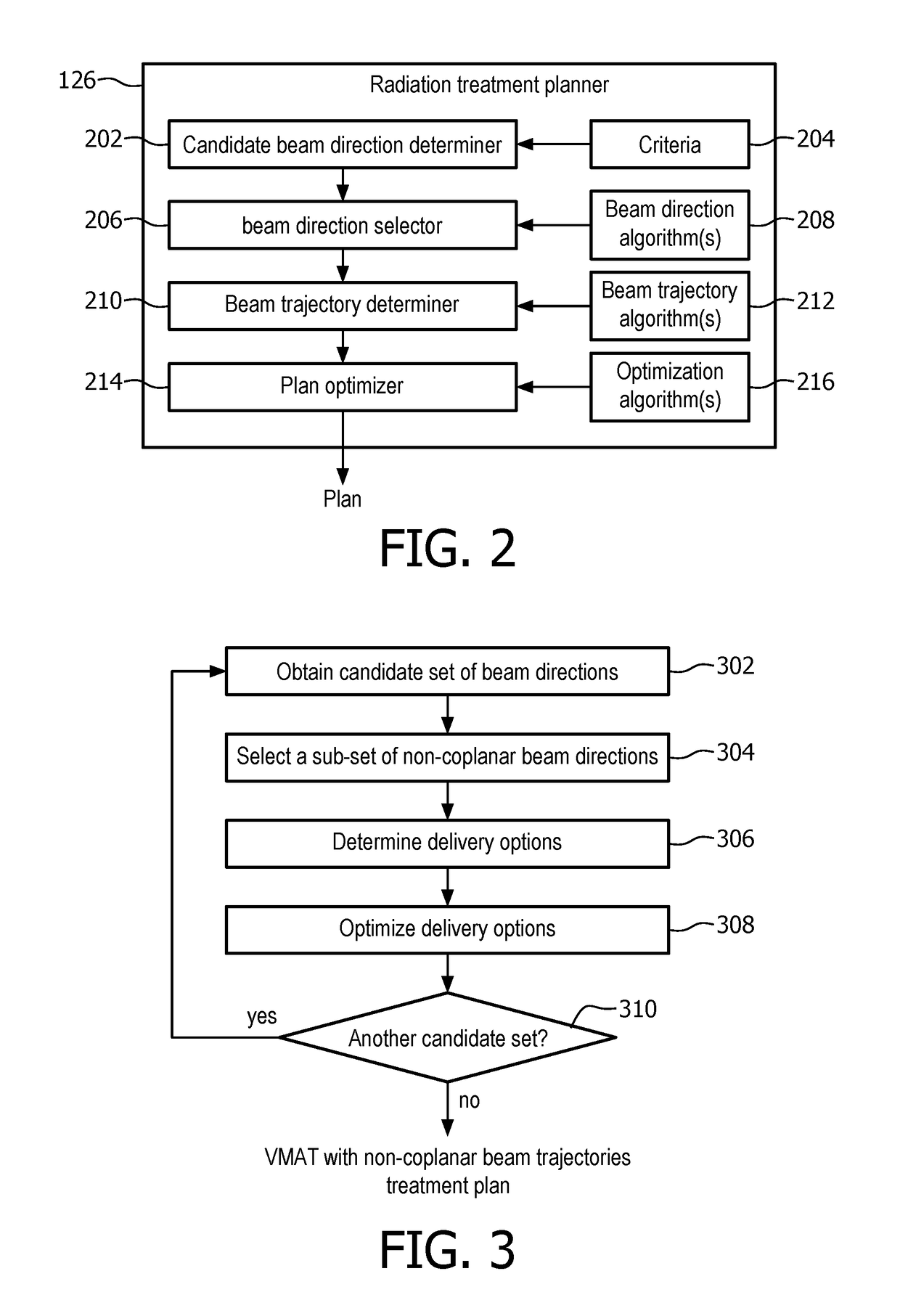Volumetric modulated arc therapy (VMAT) with non-coplanar trajectories
a volumetric modulated arc and non-coplanar technology, applied in radiation therapy, x-ray/gamma-ray/particle irradiation therapy, radiation therapy, etc., can solve the problems of inability to optimize non-coplanar incident beam directions in general, inability to use integer programming, and inability to simulate annealing or integer programming
- Summary
- Abstract
- Description
- Claims
- Application Information
AI Technical Summary
Benefits of technology
Problems solved by technology
Method used
Image
Examples
Embodiment Construction
[0012]FIG. 1 schematically illustrates a radiation therapy system 100 such a linear accelerator, or linac. The radiation therapy system 100 includes a stationary gantry 102 and a rotating gantry 104, which is rotatably attached to the stationary gantry 102. The rotating gantry 104 rotates (e.g., 180°, etc.) with respect to a rotation axis 106 about a treatment region 108.
[0013]The stationary gantry 102 includes a treatment head 110 with a therapy (e.g., a megavolt (MV) radiation source 112 that delivers treatment radiation and a collimator 114 (e.g., a multi-leaf collimator) that can shape the radiation fields that exit the treatment head 110 into arbitrary shapes. The radiation source 112 rotates in coordination with the rotating gantry 104 about the treatment region 108. The collimator 114 includes a set of jaws that can move independently to shape a field.
[0014]A subject support 116, such as a couch, supports a portion of a subject in the treatment region 108. The illustrated pat...
PUM
 Login to View More
Login to View More Abstract
Description
Claims
Application Information
 Login to View More
Login to View More - R&D
- Intellectual Property
- Life Sciences
- Materials
- Tech Scout
- Unparalleled Data Quality
- Higher Quality Content
- 60% Fewer Hallucinations
Browse by: Latest US Patents, China's latest patents, Technical Efficacy Thesaurus, Application Domain, Technology Topic, Popular Technical Reports.
© 2025 PatSnap. All rights reserved.Legal|Privacy policy|Modern Slavery Act Transparency Statement|Sitemap|About US| Contact US: help@patsnap.com



